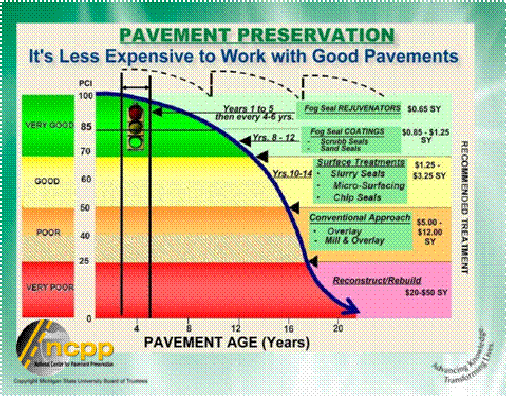Definition and Causes of Stranded Costs
“Stranded costs” are caused when an employee leaves the system as an employee with vested retirement or health care benefits, with unfunded liability associated with them, but with no requirement for either the employee or any employer to fund that unfunded liability. Examples:
- Normal retirements of employees where benefits are not fully funded.
- Early retirements induced by early retirement incentives with benefits not fully funded.
- “Retire-rehire” schemes to shift responsibility of unfunded liabilities to remaining system
- Privatization of support services (custodial, transportation, food service) – if the released employees have vested benefits but neither employee or employer no longer contributes to the funds
- Privatization of substitute teachers – if these subs have vested benefits
- Charter schools, if the schools caused a departure of employees from the MPSERS with vested benefits with no contributions being made for them in the future.
Note: Of course, if there were no unfunded liabilities (caused by unrealized investment rate of return, mortality and other assumptions used in calculating the “normal costs”, there would be no “stranded costs”.
Misconception
The fact that there are fewer people as active current employees does NOT cause the unfunded liability, although the “missing” employees will not be there to share the burden of prior incurred unfunded liabilities. I.e., the problem is that there were benefits “promised” that have not been funded and now there aren’t new people to shift the cost to, similar to a Ponzi scheme that ultimately fails, but that in itself does not cause “stranded costs”.
Conclusion re Charter Schools
Future potential rapid expansion of charters or charter school enrollment has the potential of creating stranded costs IF they cause displacement of employees from MPSERS participating districts with vested benefits.
Why Current Operating Expenditures ("COE")?
Many districts over the years have converted significant payroll costs to contracted services. Many of the former employees had unfunded pension and health care costs associated with them which was shifted to the remainder of the MPSERS system. A mechanism is needed to restore onto the districts responsible for those "stranded" unfunded liabilities the responsibility to pay for them. Applying a percentage charge to Current Operating Expenditures ("COE") statewide that will collect the current year charge for those unfunded liabilities spreads the responsibility more broadly, including onto contracted services which is included in COE.
Why Current Operating Expenditures ("COE") Instead of a Simpler Allocation Per Pupil?
There is an "equity gap" currently, with some districts receiving a larger foundation grant per student than others. We should not increase this equity gap.
Payroll per pupil is higher in high foundation grant districts than in lower foundation grant districts. If the unfunded liability were recovered charging the districts their proportionate share on a per pupil basis, the high foundation districts' share would be lower than their proportionate share of the state total payroll costs. Therefore, a per pupil allocation of the unfunded liability would disproportionately favor the high foundation districts, contrary to our attempt to ultimately close the "equity gap" between the high and low foundation grant districts.
Stated another way, 12.49% (the current calculated UAL percentage) of a districts payroll per student is a different amount from district to district. The higher the payroll per student in a district, the more MPSERS burden is taken off that district with a flat across the board per student categorical. The districts with high payroll per student would be the winners and the low payroll per student would be the losers in a flat across the board per student categorical.
The flat across the board per student categorical would increase the equity gap, and therefore is not a preferred solution.
The H-3 Approach to Stranded Costs
The H-3 House approved version of SB 1040 contains a solution to the stranded cost problem via the COE or "current operating expenditures" mechanism. Beginning in 2013-14 fiscal year for traditional public schools, their total MPSERS assessment will be split into two parts:
- 11.9% will be applied to Current Operating Expenditures and
- 3.5% will be applied to payroll to cover the normal costs for the revised retirement and healthcare benefits.
Together, this is equivalent to 24.46% of systemwide payroll.
Non-K-12 entities (i.e., libraries, community colleges, ISD's and MPSERS participating charters) would pay 24.46% on payroll, because of their vastly different cost structures. Universities would continue paying their remaining liability under the current plan.
Key Point: The foundation grant received by the districts would not change. However, the MPSERS payments made by the district would be in two pieces,
(1) the lump sum UAL amount based on Current Operating Expenditures and
(2) the remaining MPSERS contribution percentage of wages.
For example, assuming we wish to collect 24.46% total MPSERS contribution rate across all payroll, first we would subtract the amounts due from the libraries, community colleges, ISD’s, MPSERS participating charters and the universities. Next we subtract 3.5% (the percentage set in the bill) of payroll from the remaining K-12 districts. The remainder is then divided by the total COE of the remaining K-12 districts, which based on historical data, equals 11.9%. A computation similar to this would be done each year to set the COE rate.
Because the UAL would be paid by the districts as a percentage of their combined COE (a much larger number than total payroll), the remaining MPSERS contribution rate based on wages can go down accordingly. Thus, the payment made for their share of the UAL based on COE would be offset by a lower MPSERS contribution rate on their wages. However, because districts which have privatized significantly will now be paying the UAL based on their Current Operating Expenditures rather than their wages, the stranded costs of their privatizing will now be covered.
Other Options Explored
Several other options were investigated, but allocating the UAL according to the Current Operating Expenditures (COE) appears to match the district's responsibility for the unfunded liability the best. It is not perfect, but it works as it is a readily accessible figure to obtain by the state due to its being reported by the school districts and published in the DOE annual bulletins 1011 and 1014. See Appendix A for definitions and what is included and what not included.
Cost Control Encouraged
Also, to the extent that we wish to encourage cost control, using current operating expenditures as the factor which affects the UAL allocation creates the most incentive. The higher the Current Operating Expenditures per Pupil, the higher the District UAL per Pupil, which reduces their remaining unallocated funds.
Conclusion
If the stranded cost problem is not addressed now, it is equivalent to sitting in a boat swamped with water, bailing furiously to get the water out of the boat, but failing to plug the hole in the bottom of the boat. Privatization of support services is expected to increase in the future, because of the lower cost usually of the contracted for services (due to a combination of lower retirement benefit costs, health care costs and wages). Any MPSERS reform that does not account for and deal with these stranded costs which are expected to increase in the future will be a reform that does not last.
Appendix A: Definition of “Current Operating Expenditures” from H-3, page 18.
“(17) AS USED IN THIS SECTION, "CURRENT OPERATING
3 EXPENDITURES" FOR A PUBLIC LOCAL SCHOOL DISTRICT INCLUDES
4 FUNCTIONS 1XX, 2XX, 45X, AND ALL OBJECT CODES EXCEPT 6XXX, AS
5 DEFINED IN THE MICHIGAN PUBLIC SCHOOL ACCOUNTING MANUAL BULLETIN
6 1022, AND IS EQUAL TO THE TOTAL OF INSTRUCTIONAL AND SUPPORT
7 SERVICES EXPENDITURES, INCLUDING THE TOTAL GENERAL FUND CHARGES
8 INCURRED IN THE GENERAL, SPECIAL EDUCATION, AND VOCATIONAL
9 EDUCATION FUNDS FOR THE BENEFIT OF THE CURRENT FISCAL YEAR,
10 WHETHER PAID OR UNPAID, AND ALL EXPENDITURES OF THE INSTRUCTIONAL
11 PROGRAMS PLUS APPLICABLE SUPPORTING SERVICE COSTS REDUCED BY
12 CAPITAL OUTLAY, DEBT SERVICE, COMMUNITY SERVICES, AND OUTGOING
13 TRANSFERS AND OTHER TRANSACTIONS. CURRENT OPERATING EXPENDITURES
14 FOR A PUBLIC LOCAL SCHOOL DISTRICT ALSO INCLUDE OPERATING FUNDS
15 FOR ANY PUBLIC SCHOOL OR OTHER PUBLIC EDUCATIONAL ENTITY FIRST
16 AUTHORIZED OR ESTABLISHED BY THE PUBLIC LOCAL SCHOOL DISTRICT ON
17 OR AFTER THE EFFECTIVE DATE OF THE AMENDATORY ACT THAT ADDED THIS
18 SUBSECTION.”

“Expenditures
(Note: To avoid counting the same expenditure multiple times, Statewide and Groupings reports DO NOT INCLUDE expenditures paid to another public school (Function 411 and/or object codes 82xx.) )
Instruction - The cost of activities dealing directly with the teaching of students in the classroom or in a classroom situation. These expenditures do not include capital outlay. Per pupil expenditures for Basic and Added Needs Instruction are calculated using only K-12 and Special Education pupil fte as the divisor. Adult Education Instructional Costs per pupil are calculated using only Adult Education Participants as the divisor.
Basic Programs (Function 11x)- The classroom costs related to basic instructional classroom programs. This includes pre-k, elementary, middle, and high school programs.
Added Needs Programs (Function 12x) - The classroom costs of added needs instructional programs offered by the district. These include special education, compensatory education, or career/technical education.
Adult Education Programs - (Function 13x) - The classroom costs of adult/continuing education programs offered by the district.
Supporting Services - The cost of activities which provide administrative, technical, and logistical support to facilitate and enhance instruction. These expenditures do not include capital outlay. Per pupilexpenditures are calculated using the total pupil fte (k-12, special education, and adult education participants.)
Support Services - Pupil (Function 21x) - Those activities which are designed to assess and improve the well-being of pupils and to supplement the teaching process. These include attendance, guidance, health, and social work services.
Support Services - Instructional Staff (Function 22x) - Those activities associated with assisting the instructional staff with the content and process of providing learning experiences for pupils. It includes teacher in-service, curriculum development, educational media services, computer labs, educational television, and program directors.
Support Services - School Administration (Function 24x) - Those activities concerned with the administrative responsibility of a single school (commonly referred to as the principal's office.)
Support Services - General Administration (Function 23x) - Those activities concerned with establishing policy, operating schools and the school system, and providing essential facilities and services to staff and pupils. It includes the activities of the Board of Education and the superintendent of schools.
Support Services - Business Administration (Function 25x)- Those activities concerned with budgeting, accounting, payroll, purchasing, and internal services.
Support Services - Facilities Acquisition (Function 45x) -Those activities concerned with capital leases/purchases of land or buildings.
Support Services - Operations and Maintenance (Function 26x) -Those activities concerned with keeping the physical plant open, comfortable, and safe for use.
Support Services - Pupil Transportation (Function 27x) - Those activities concerned with the conveyance of pupils to and from school and to and from school activities.
Support Services - Other (Function 28x) - Activities other than those mentioned above which support each of the instructional and supporting service programs. It includes research, personnel, and data processing.”
http://www.michigan.gov/documents/mde/b1011-11_381977_7.pdf




